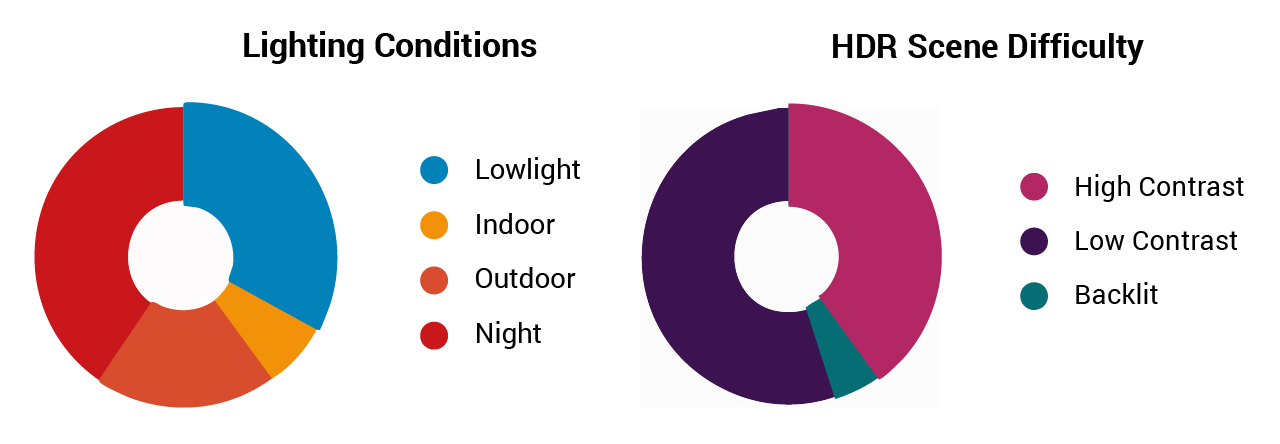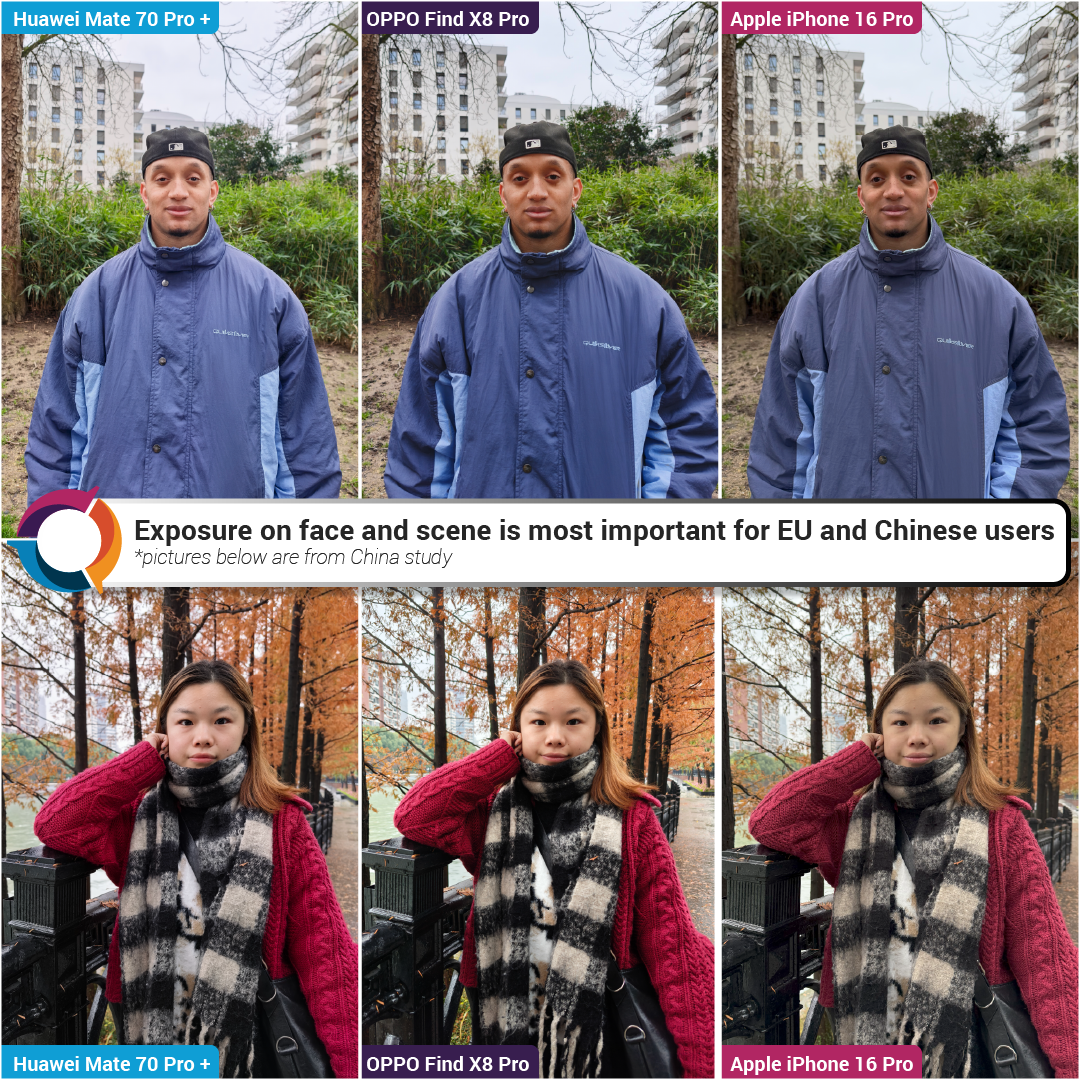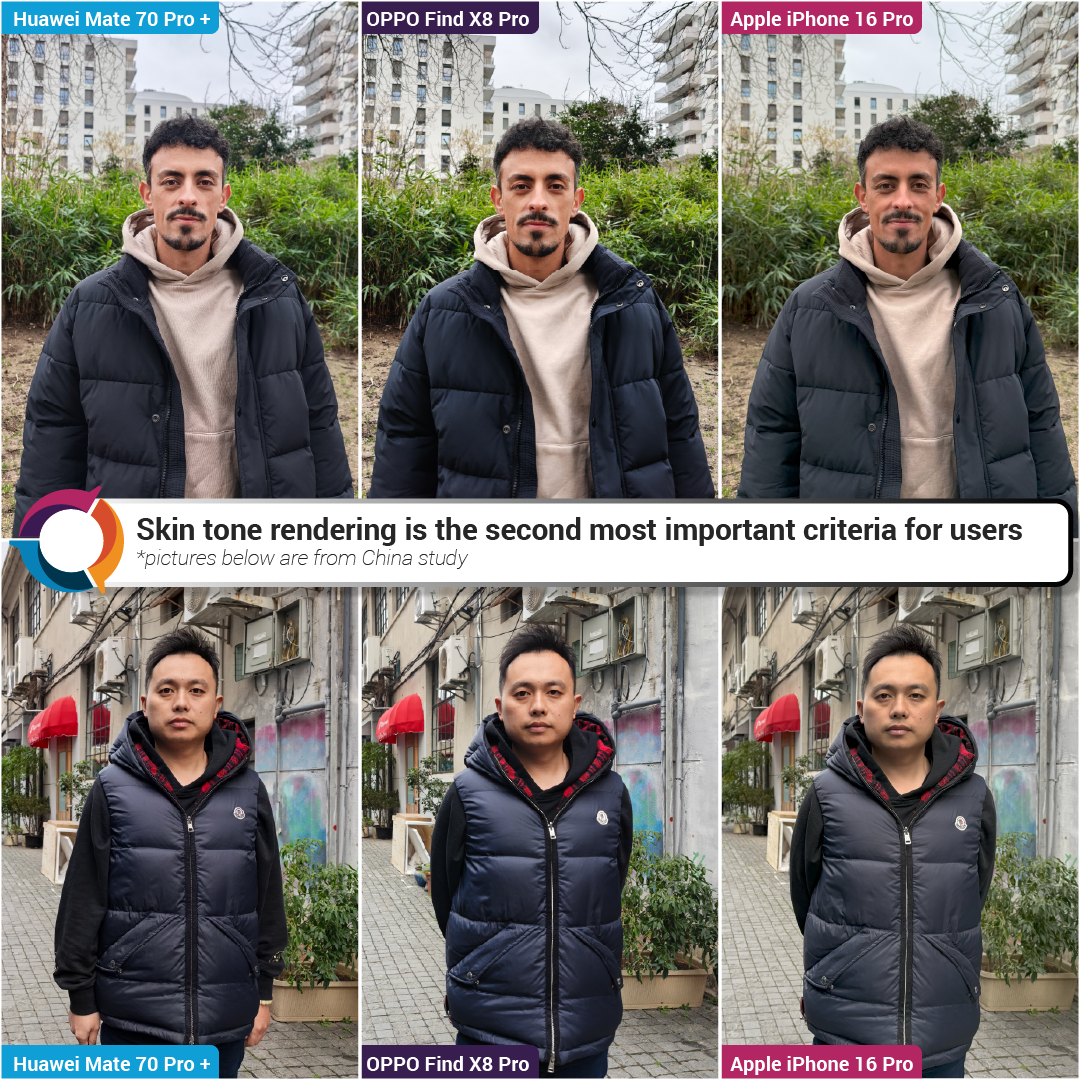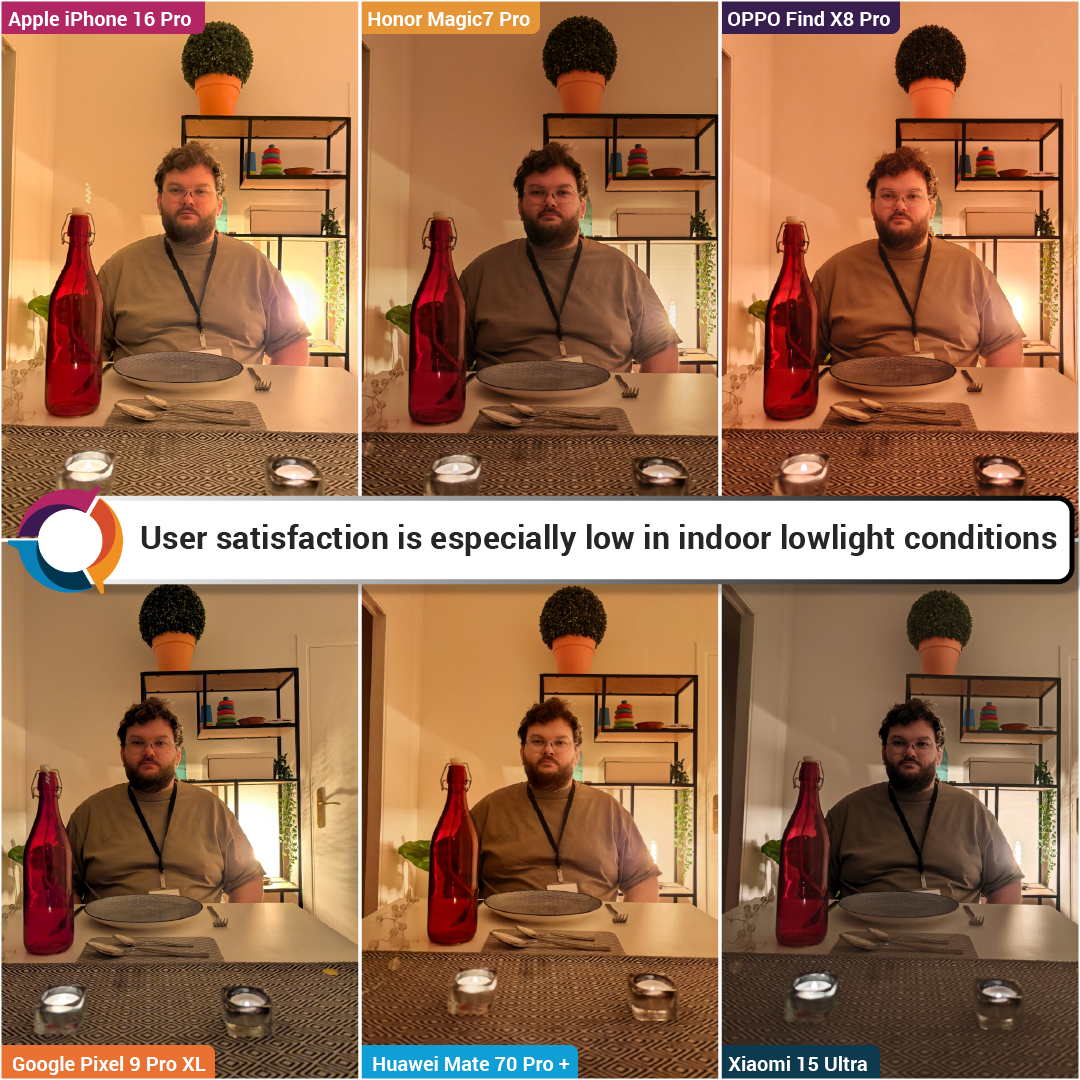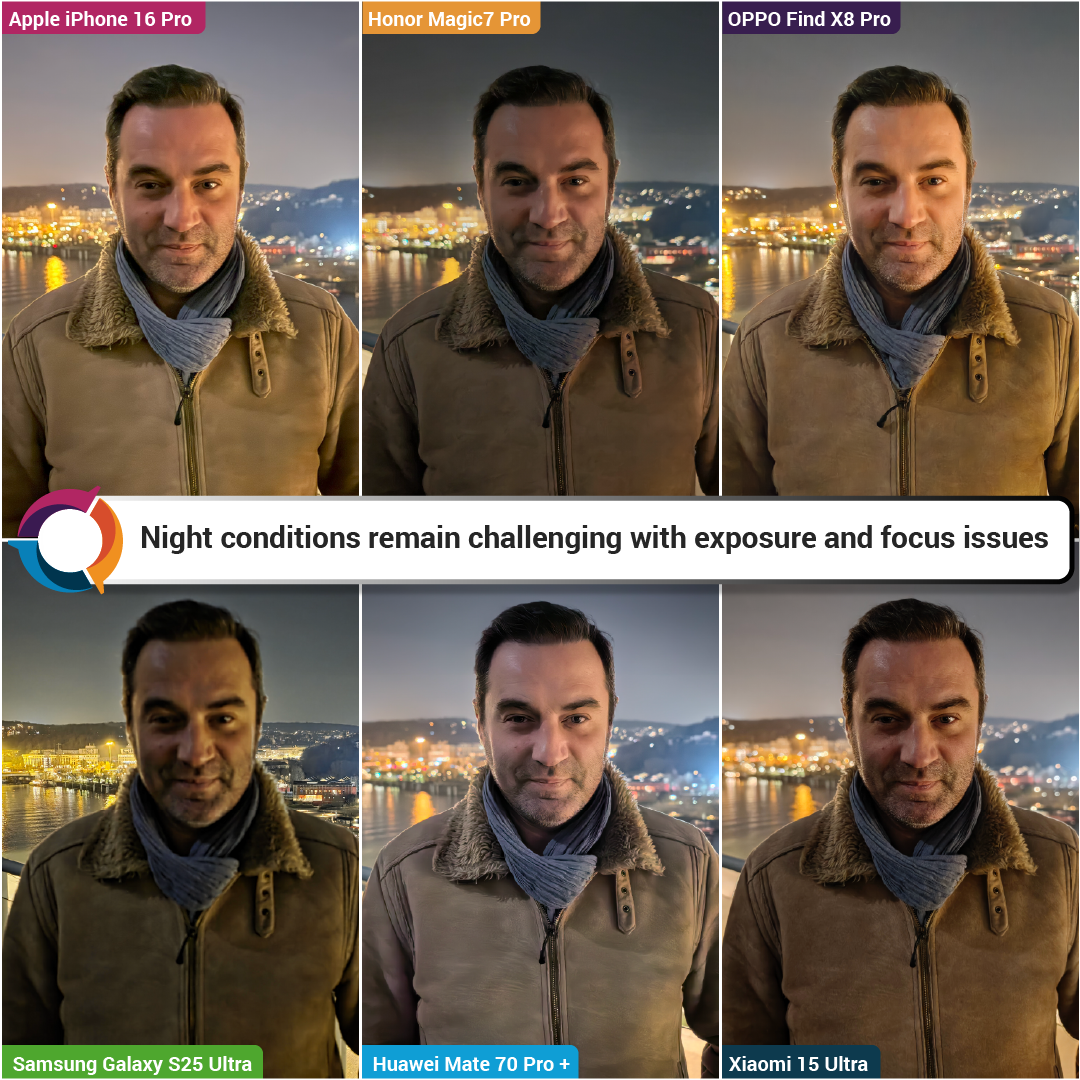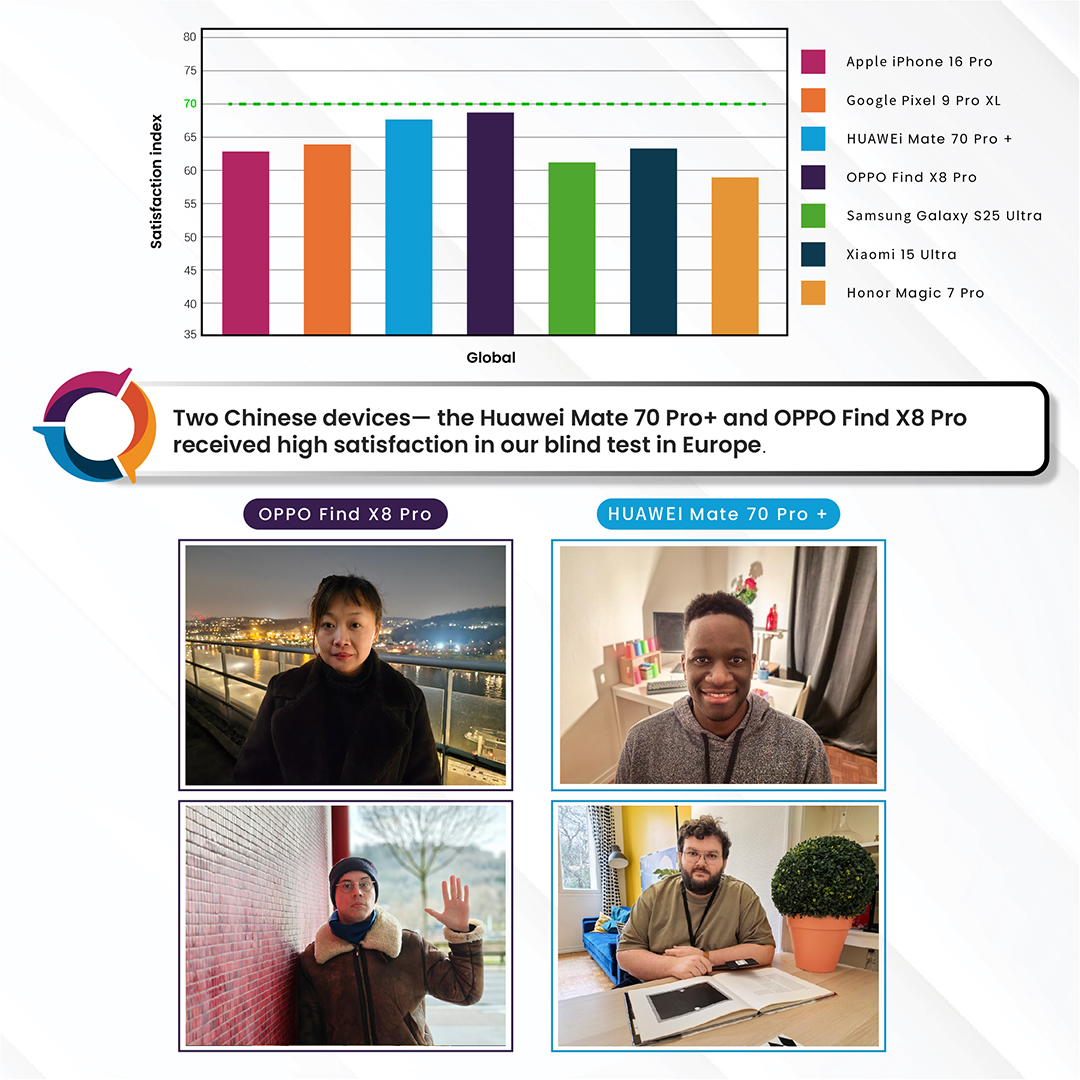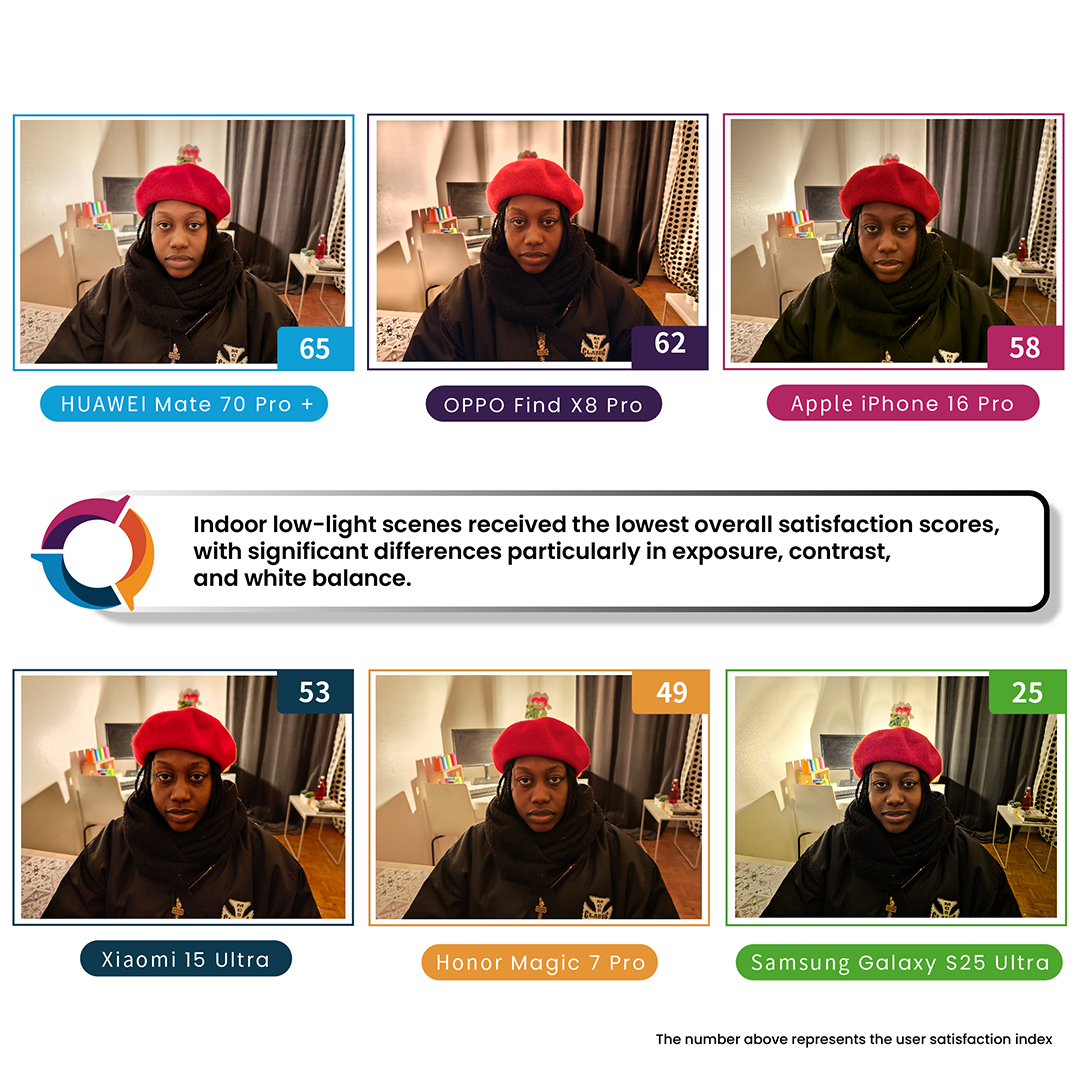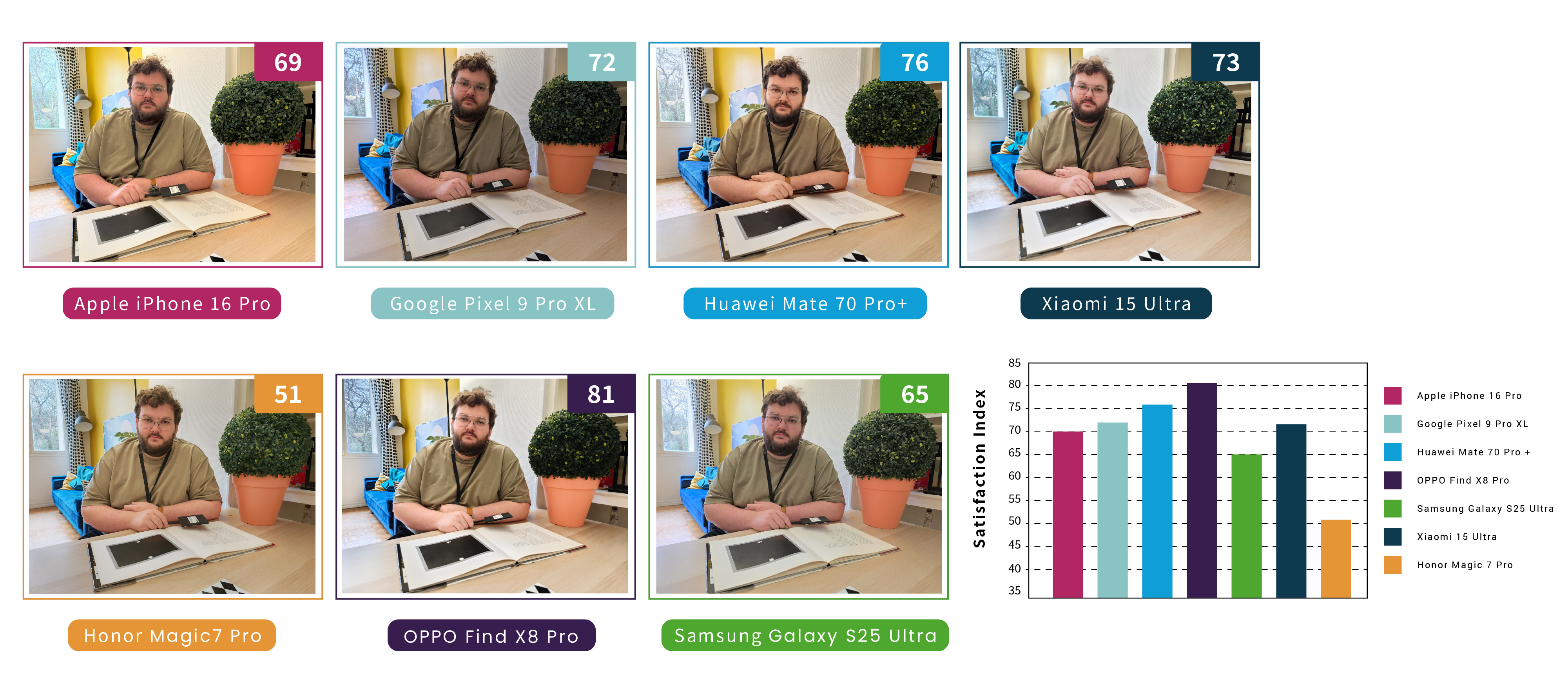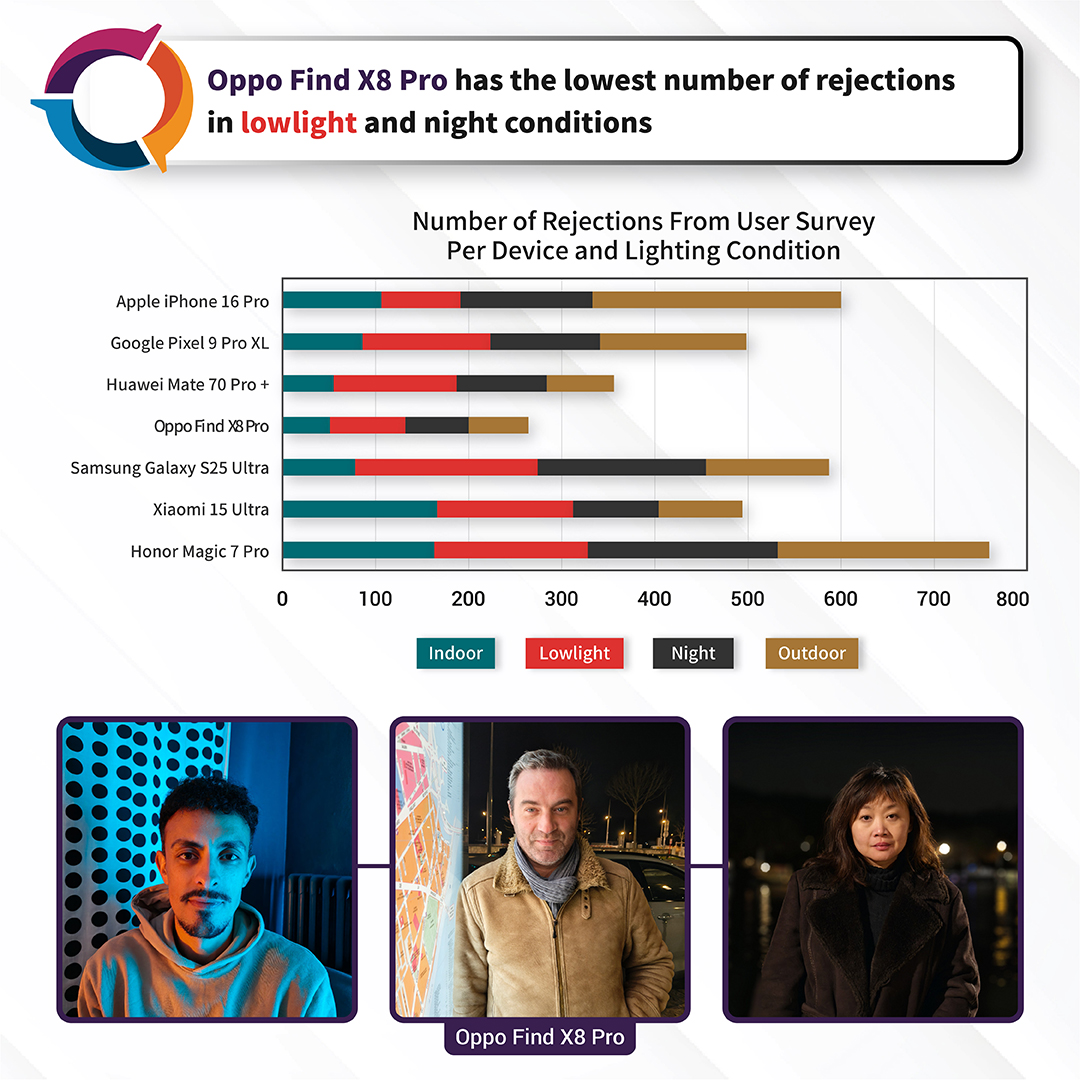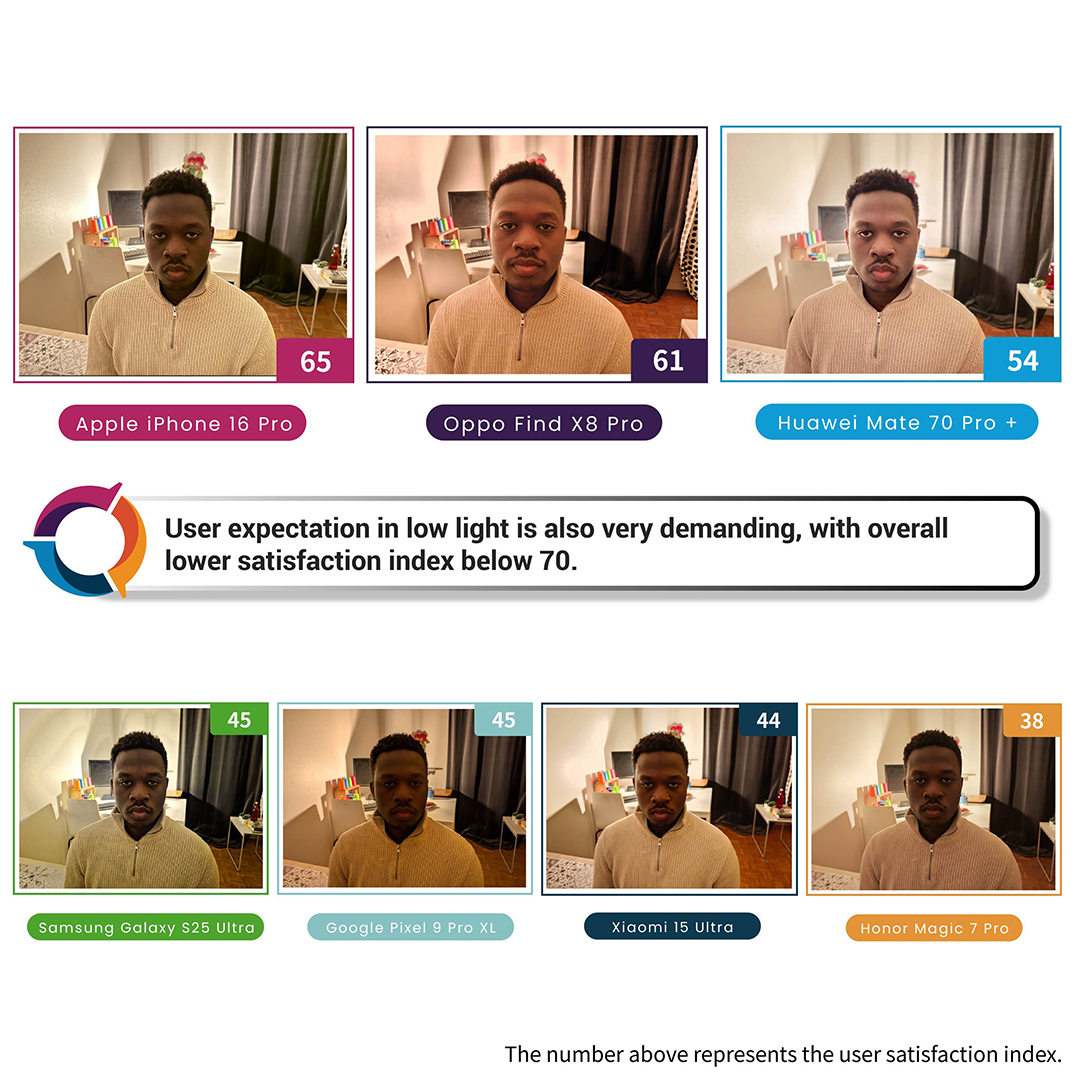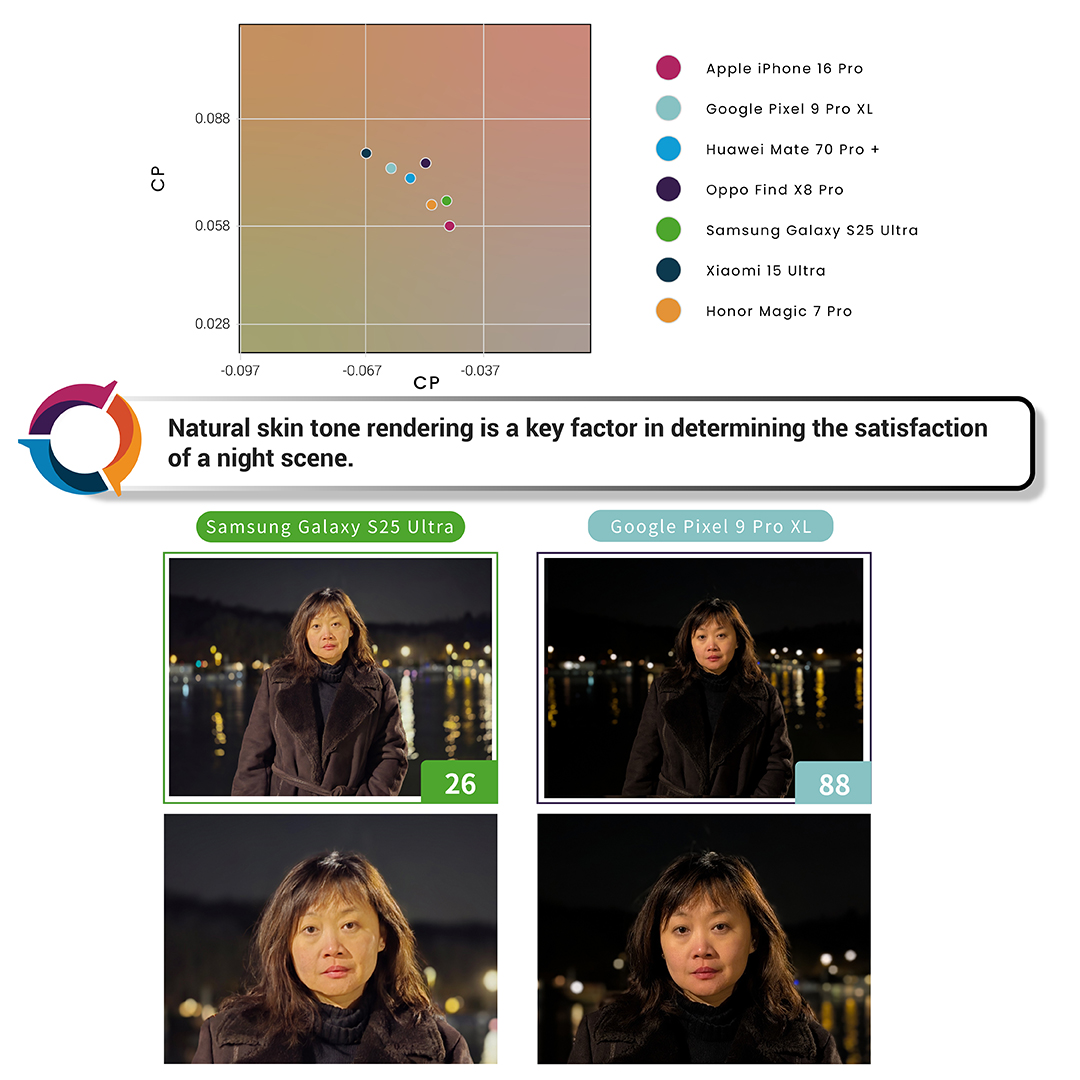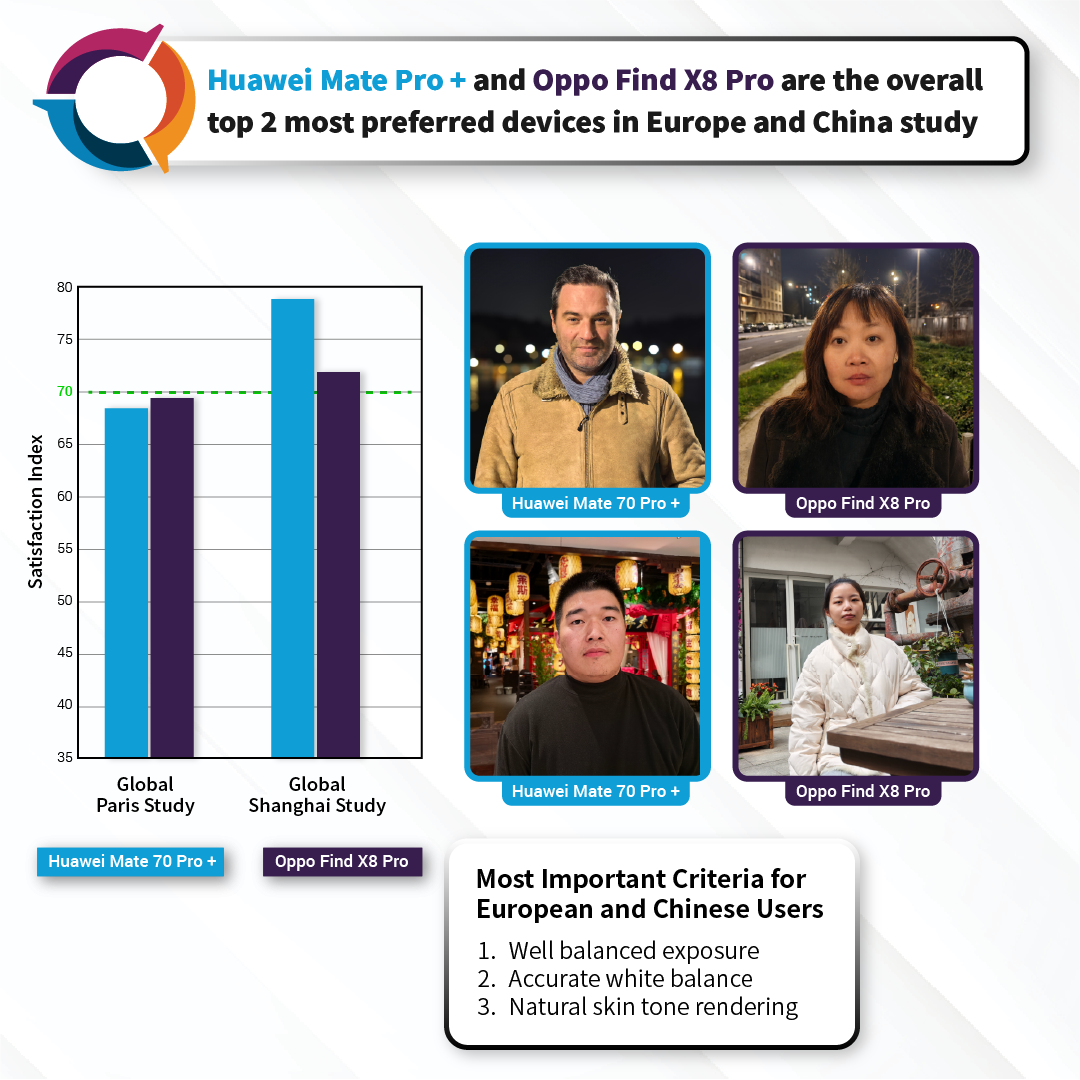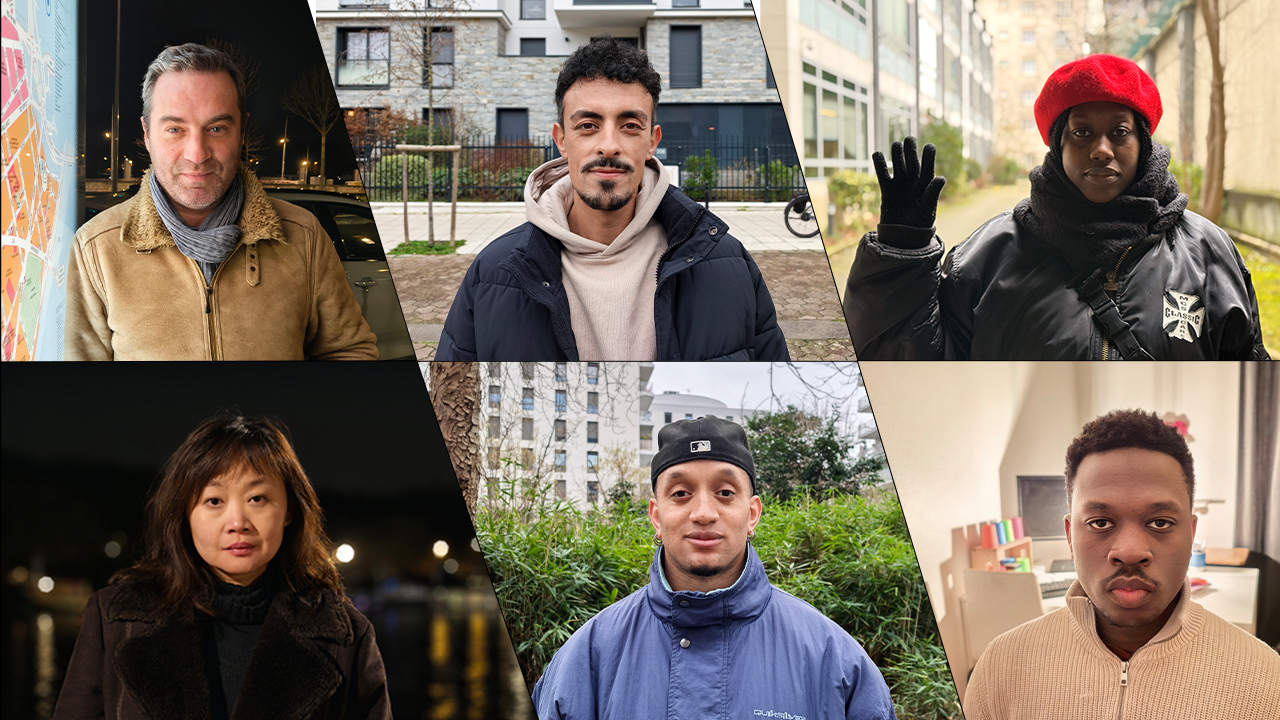
At DXOMARK, our mission goes beyond technical analysis — we are deeply committed to capturing real user experiences. In 2023, we launched DXOMARK Insights, a global initiative aimed at understanding user preferences and pain points when it comes to smartphone imaging, particularly portrait photography.
As we are preparing to release the next version of our Camera v6 protocol, we conducted a blind survey in Paris to explore how flagship smartphones meet (or fall short of) user expectations. This study focused on evaluating performance in a variety of scenes—especially the most demanding ones, such as low-light environments, high dynamic range (HDR) settings, and backlit conditions. In addition to helping us understand user preferences for portrait photography in Europe, the scenes used in this Insights study are the ones that will be applied in the implementation of our new camera protocol.
In this article, our findings will show the areas of image quality that help identify the trends in preferences of European consumers. We’ll also look at how these compare with the preferences of Chinese users.
3 key takeaways:
- Despite strong improvements from the latest flagships, there is still room for improvement across all lighting conditions
- Portrait pictures taken by Huawei Mate 70 Pro+ & Oppo FindX8 Pro were generally preferred across all lighting conditions
- 3 major factors looked for in Europe and in China when evaluating portraits: an accurate exposure of the face and the scene, a neutral white balance as well as natural skin tones
Our methodology
This DXOMARK Insights study on smartphone HDR portrait photography focuses on assessing the perceived image quality of HDR photos themselves, rather than how they appear on specific smartphone displays.
The study involved seven of the most popular flagship smartphones: Apple iPhone 16 Pro Max, Honor Magic7 Pro, Samsung Galaxy S25 Ultra, Oppo FindX8 Pro, Google Pixel 9 Pro XL, Huawei Mate70 Pro+ and the Xiaomi 15 Ultra.
The shooting plan was designed to feature a variety of everyday scenes from European consumers, with a focus on challenging ones including indoor, lowlight and night scenes, as well as some backlit and high contrast situations, covering a total of 50 scenes.
As for previous Insights surveys, blind comparisons run by the user panel were performed with HDR visualization tools. For this study, we ensured HDR image files were viewed as they would be through third-party software, aligning with real-world usage. HDR formats that are either documented or follow ISO specifications were processed using gain map information, while non-standard formats were handled according to ITU guidelines. This approach emphasizes the importance of interoperability—highlighting which devices produce images that are easily shareable and viewable across various smartphones. Notably, all tested devices use open HDR formats, apart from the Honor Magic 7 Pro. Meanwhile, the Huawei Mate 70 Pro Plus supports ISO-compliant HDR output on the latest HarmonyOS version, ensuring broad compatibility.
In addition, due to the technical constraints in displaying HDR content on the web, please note that the photos used in this article are for illustration only. To view the HDR format rendering, these visuals need to be viewed with the proper HDR visualization tools.
To better understand user perception, the models featured in the photos were asked to provide feedback on their own portraits. The panel consisted of 39 demanding users, including flagship smartphone owners and photography enthusiasts. The survey was structured into two key phases:
- Blind Pairwise Comparison – Participants were shown two images of the same scene, each taken with a different smartphone. Through a series of side-by-side comparisons, they selected their preferred photo until a consistent JOD (Just Objectionable Difference) scale was established across all seven devices.
- Photo Series Rejection – In this step, participants were presented with a full set of photos from a single scene and asked to identify any images they disliked or would avoid sharing on social media.
This two-step approach allowed us to capture detailed data per scene, including:
- The overall rejection rate across all respondents
- The rejection rate within the specific user group being analyzed
- The calculated JOD scale for each comparison
From these insights, we derived a Satisfaction Index for every image, a core from 0 to 100 that reflects how often users accept or reject an image, providing a clear view of user preferences. A score of 0 indicates that more than half of respondents rejected the image, while a score of 100 acceptance
while a score of 100 indicates strong acceptance by the user panel and no rejection for the specific scene or group of scenes. To enrich our understanding, participants were also asked to explain the reasons behind their rejections—giving us valuable qualitative feedback on what makes or breaks a portrait photo.
What are the pain points identified by European users when it comes to portrait pictures?
In blind tests conducted across Europe, users consistently identified three major pain points affecting image quality in portrait photography.
- First and foremost, underexposure was frequently cited—faces and entire scenes often appeared too dark, diminishing the overall appeal of the image.
- Second, white balance inconsistencies were a common complaint, with images sometimes looking unnaturally cold or overly warm.
- Lastly, unnatural skin tones emerged as a critical factor; even subtle shifts in tone were enough to significantly lower user satisfaction, underscoring how sensitive viewers are to color accuracy in portraits.
Among these, exposure stood out as the most persistent issue, clearly noticeable not just in outdoor shots, but also in more complex lighting scenarios such as backlit or high-contrast scenes. While exposure is an important factor, this doesn’t imply that European users are simply seeking brighter images. Instead, they place significant emphasis on the relative brightness of the face in comparison to the overall image. We’ll explore this topic in more detail later in the article”
To expand our understanding, we compared these findings with a similar study conducted in China the previous year. Interestingly, users in both Europe and China exhibited remarkably similar preferences, highlighting a growing global convergence in what people expect from smartphone portrait photography.
In terms of lighting conditions, lowlight scenes are the ones that still show significant challenges, due to users being more demanding in these settings, and even more than in night scenes.
Our satisfaction ranking in Europe
The results from Europe clearly highlighted two top performers: Huawei and OPPO. These brands led in nearly every lighting condition — from bright daylight to dim indoor scenes — and scored consistently high across several key criteria:
- Top 3 in exposure and white balance across the board
- Very low rejection rates, particularly in low-light scenarios
- Steady performance across all portrait scenes
According to the JOD (Just Objectionable Difference) analysis, Huawei and OPPO stood out as the most preferred devices for users across the whole shooting plan
When analyzing the overall shooting plan and aggregating user preferences across all scenes, Huawei and Oppo emerged as the most favored smartphones. The graph below presents the devices ranked by their average performance across all scenes and lighting conditions.
Similarly, the ranking obtained in Europe reached the same results as with the China insights (check out the last part of the article for more details). One important point to highlight is that, although these devices were not initially designed for the European market and are not commercially available in the region, their image quality tuning appears to align well with the preferences of European users.
Among all lighting conditions, smartphones struggle more in night & low-light photography
While most flagship devices perform well in good lighting, our study revealed that low-light and night scenarios remain major weak points. These settings continue to produce significantly lower satisfaction scores, even for premium models.
For easy and bright outdoor scenes, users are increasingly demanding
Even under well-lit conditions, users demonstrated high sensitivity to subtle differences. Minor variations in exposure or white balance could significantly sway the Satisfaction Index.
- Devices with slightly underexposed faces, were consistently rated lower (Apple & Honor in the following example)
- Bright, high-contrast renderings performed better and were preferred among our panel of users (Oppo & Huawei in the following example).
This tells us that users are becoming more refined in their tastes and more critical, even of images that are objectively “good.” They expect not just technical accuracy, but visual appeal and emotional resonance in every shot.
Indoor Low-Light Scenes Fall Short
Indoor low-light conditions proved especially difficult for most smartphones. Satisfaction scores dropped sharply, often below 70, even though the photos were technically acceptable.
Why? Users simply do not perceive these scenes as difficult and therefore expect image quality to remain high. When devices underexpose faces or produce strange hues under artificial lighting, the mismatch between expectations and results creates frustration.
In these scenes, Huawei & Oppo stood out with a more consistent exposure stability and natural-looking tones. iPhone & Google devices also brought a strong performance in lowlight and night respectively. Across all devices, however, users pointed to white balance inconsistency and contrast instability as major drawbacks.
Night Photography Quality Is Still Lacking
In dark environments, the performance gap widened and user satisfaction was still far from ideal in this condition. Overall, Huawei, OPPO, and Google delivered the most acceptable results, though many examples still struggled with low JOD scores. We observe still a lot of pain points on many different devices and all devices were challenged by the night shots. There is a high rejection rate and low JOD scores on many use cases.
- Issues like clipped highlights, underexposed faces, and unnatural skin tones were common.
- Devices like the Samsung Galaxy S25 showed inconsistency in facial exposure even with advanced hardware.
Overall, facial exposure, white balance, and skin tone rendering remain the top drivers of user dissatisfaction in night photography.
Interestingly, in night photography, a brighter face isn’t always seen as better. What truly matters to users is the balance between the face and the background. A well-managed exposure ratio between these elements plays a crucial role in perceived image quality. Users consistently favored images where the face stands out naturally without overpowering or being lost in the background, highlighting the importance of cohesive, well-balanced lighting in low-light portrait scenarios.
Still ways for improvements for most devices of the study
Expectations are rising, with even the smallest flaws in top-tier devices now being easily detected by discerning users. Fine-tuning product details has become more critical than ever for manufacturers.
Each device showed its strengths — but also clear areas needing improvement:
Honor Magic7 Pro
HDR format is not supported by third-party devices resulting in exposure and contrast issues. Also, performance under complex lighting conditions lacks stability. Skin tones tend to appear yellowish-green, leaving users with a sense that the images lack warmth.
Samsung Galaxy S25 Ultra
Highlights are overly clipped in low-light HDR scenes photography, and there’s a noticeable issue of underexposure in night-time shooting scenarios. Skin tone rendering sometimes unnatural as well.
Apple iPhone 16 Pro
Insufficient facial brightness is a core subjective complaint. Skin tones lean towards orange and green hues, which makes the images less pleasing than expected.
Huawei Mate 70 Pro Plus
Performs consistently overall, but tends to overexpose faces in high backlight conditions. Occasional inaccuracies in skin tone reproduction are observed in portrait mode.
Google Pixel 9 Pro XL
Shows instability in HDR rendering, with excessive highlight clipping in low-light environments. Noticeable facial noise remains a key issue for users.
OPPO Find X8 Pro
In certain HDR scenes, images are often perceived as overly bright or washed out. At times, users also notice a pinkish tint in the white balance.
Xiaomi 15 Ultra
Dim facial exposure is one of the key challenges for this device, and its HDR failure rate is slightly higher compared to other tested models.
By anchoring our evaluations in real user feedback, we highlight issues that matter most to consumers, offering manufacturers a clearer path to meaningful improvements.
Converging user expectations between Europe and China
One of the most striking findings from our survey was the similarity in user expectations across Europe and China. We could observe that due to the earlier Insights run in Shanghai, qualifying trends in user preferences specifically in China.
Rather focus on the key aspects for both China & Europe
In both markets, when it comes to portrait pictures, users ranked the same priority criteria
✅ Subtle shifts in white balance can make or break satisfaction
✅ Proper exposure — especially on the face — is non-negotiable
✅ And yes, natural-looking skin tones are a must
This convergence underscores a growing global alignment in what users value most in smartphone photography. Regardless of cultural differences, people want accurate, natural, and well-exposed portraits.
Interestingly, Huawei Mate 70 Pro+ and OPPO Find X8 Pro were also the top-ranked devices in China — mirroring the preferences in Europe. Their strengths in delivering consistent exposure, accurate white balance, and lifelike skin tones clearly resonated across regions
Conclusion: The road ahead for smartphone photography
As smartphone users grow more discerning, their expectations for image quality continue to rise—particularly when it comes to portrait photography. The DXOMARK Insights survey underscores this shift: even subtle visual imperfections, such as slight exposure missteps or unnatural skin tones, can significantly impact overall satisfaction. This increasing demand means that smartphone manufacturers can no longer rely solely on hardware improvements; fine-tuning image processing and delivering consistent results across lighting conditions has become critical.
While a few brands, notably Huawei and OPPO, are setting the benchmark with strong performance across varied scenarios, the study highlights that key challenges remain—particularly in low-light, night, and HDR photography, where user satisfaction still drops considerably. These pain points reflect not just technical limitations, but also a gap between user expectations and current image processing capabilities.
Looking ahead, our upcoming Camera v6 protocol, launching in June, will address these issues head-on. By introducing more complex and demanding test scenarios, especially in extreme lighting environments, the updated benchmark aims to better reflect real-world usage and provide even deeper insights into what users truly value. This evolution marks a crucial step toward helping the industry deliver photography experiences that meet—and exceed—modern user expectations.


